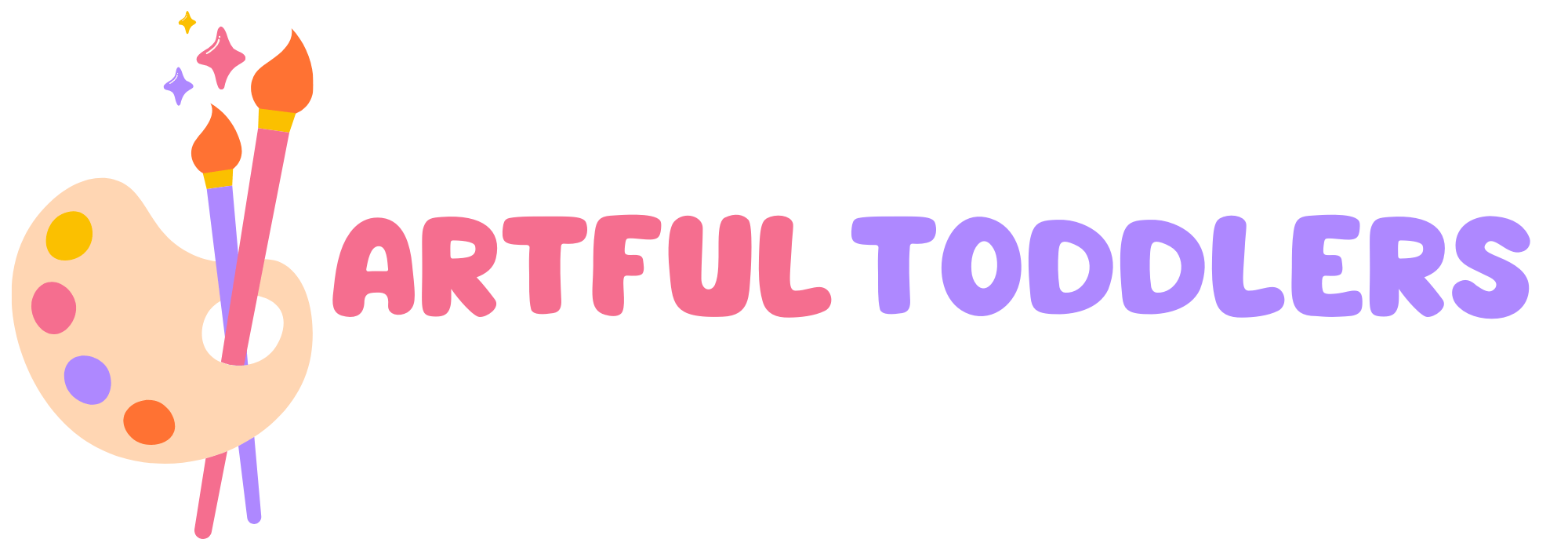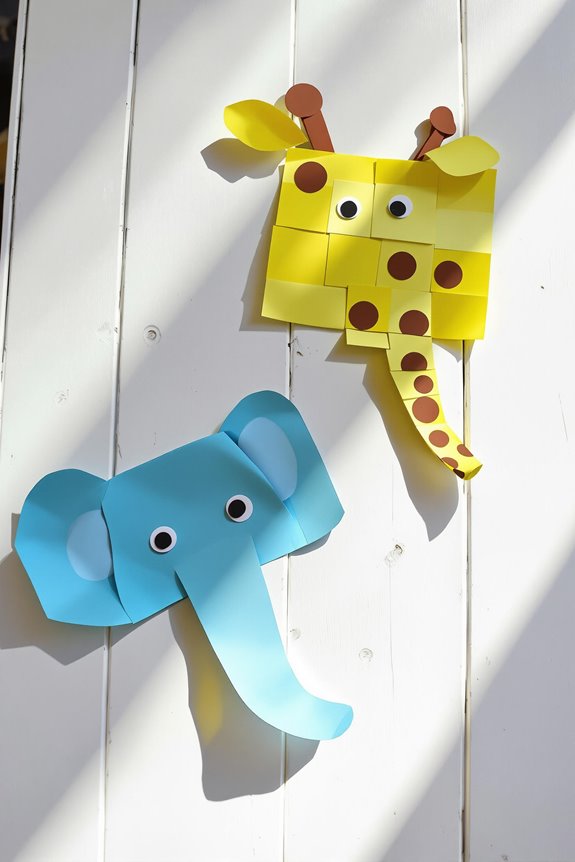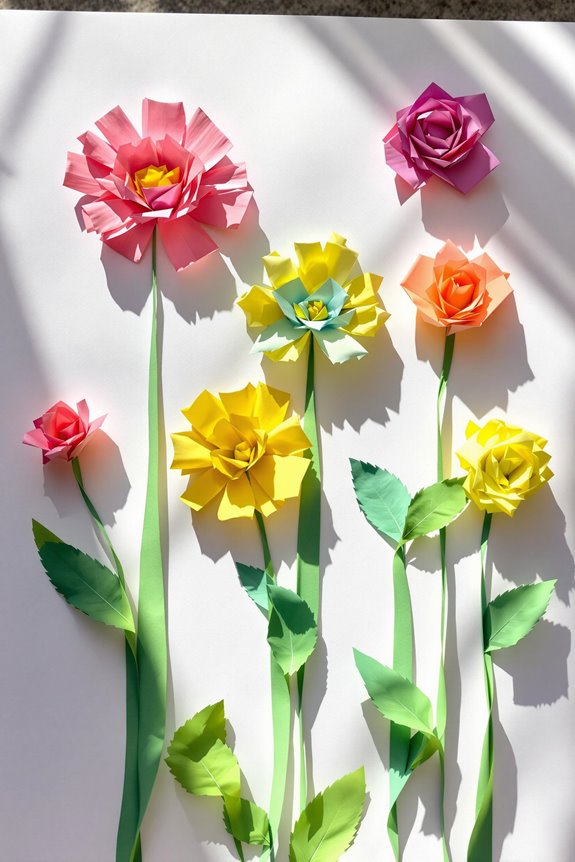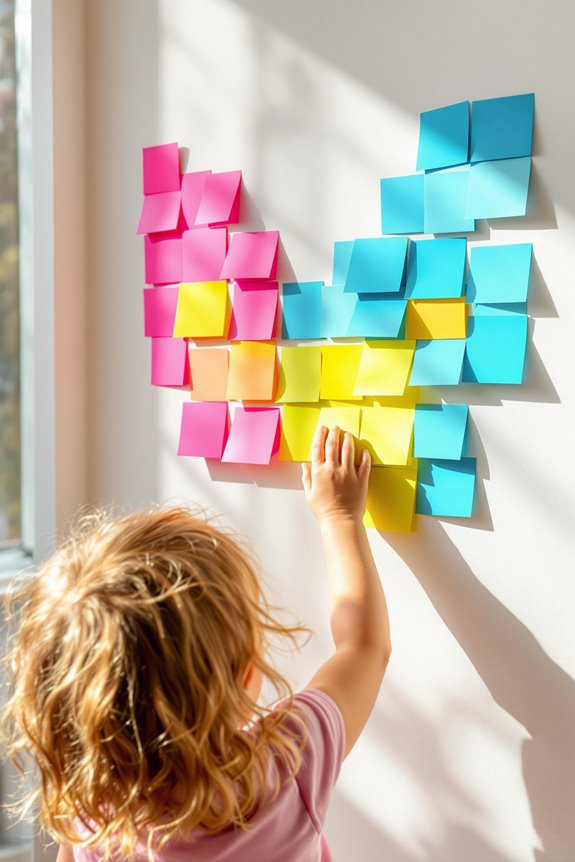
You’ll discover endless opportunities for sensory play using common household items.
Transform your kitchen into a musical venue with pot-and-pan drums, create a texture mystery box with fabric scraps and natural materials, or design a rainbow rice bin for pouring and sorting adventures.
You can set up a shadow puppet theatre using cardboard and a flashlight or craft musical instruments from paper tubes and plastic bottles.
You can make a bubble wrap dance floor, investigate tea bag colours and scents, or build a touch wall using textured materials.
These engaging activities will spark your child’s curiosity and development through hands-on investigation.
Key Takeaways
- Transform everyday kitchen items like containers, spoons, and colanders into musical instruments for sound exploration and rhythm development.
- Create a texture mystery box using cardboard and common items like fabrics, bubble wrap, and natural materials.
- Use dried beans, rice, or pasta for sorting activities, sound exploration, and sensory bin experiences.
- Make shadow puppets using household objects, light sources, and simple cardboard shapes for visual sensory play.
- Fill empty containers with different water levels to explore sound variations and create homemade musical instruments.
1. Kitchen Orchestra Party
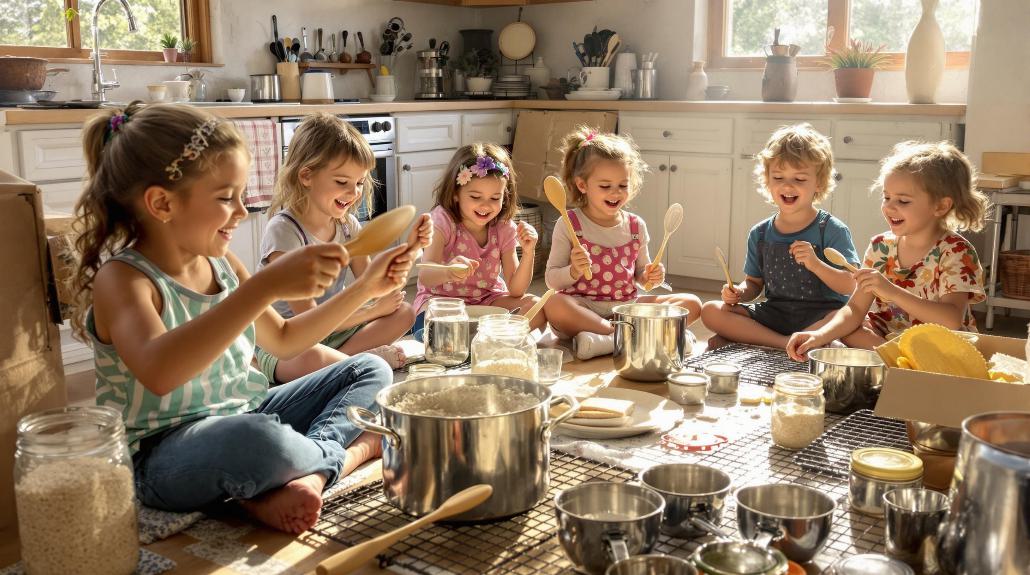
Creating a kitchen orchestra party is perfect for exploring music with everyday household items.
You’ll find endless possibilities, such as using measuring cups as drums, filling containers with dried beans for shakers, and transforming colanders into makeshift guitars.
Remember to grab those measuring spoons—they’re excellent percussion instruments when jingled together!
Upbeat music playlists can help set an energetic tone for your musical adventure.
To make it educational, you can teach musical concepts like tempo and rhythm while marching to different beats.
Try experimenting with different kitchen tools by incorporating cooking-related movements and examining various sounds.
Remember to prioritize safety by supervising children closely and choosing age-appropriate items.
Adding storytelling elements about food and cooking can enhance the experience, making it a musical and learning adventure for everyone involved.
2. Texture Hunt Mystery Box
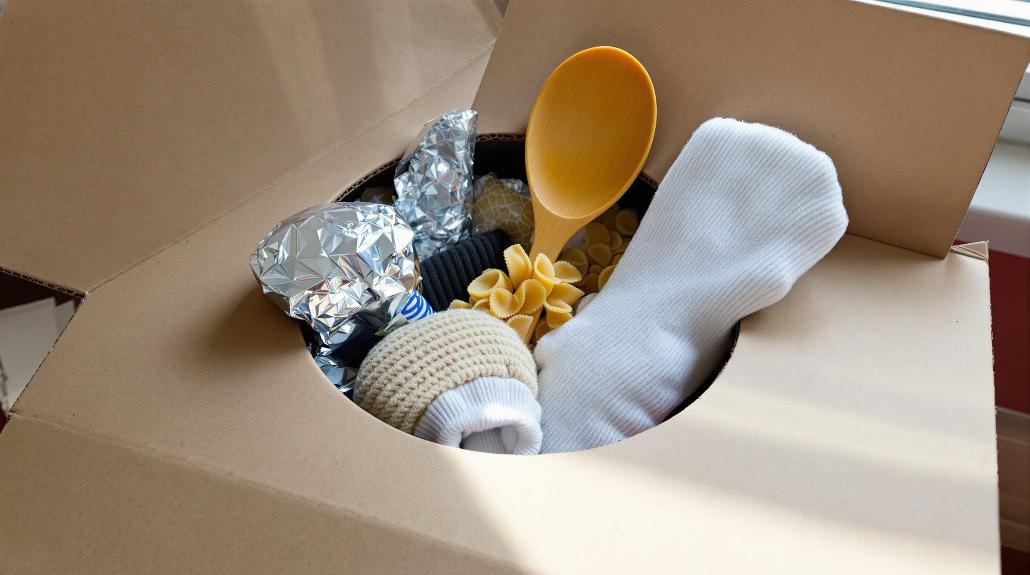
You can craft an exciting texture hunt mystery box with a cardboard box and everyday items that spark sensory exploration.
Cut hand-sized holes in the box’s side, then fill it with objects of varying textures, such as hairbrushes, stuffed animals, and play dough.
You’ll want to decorate the box visually to appeal to young learners. Use a toddler-sized cup as a template to trace consistent holes.
Ask children to reach inside while keeping their eyes closed, encouraging them to describe their feelings.
Guide them with questions like “Is it smooth or rough?” and “Does it feel heavy or light?”
You can modify the activity by creating themed boxes for different seasons or subjects.
Have children record their observations or transform them into a broader texture scavenger hunt throughout your home for added challenges.
3. Rainbow Rice Bin
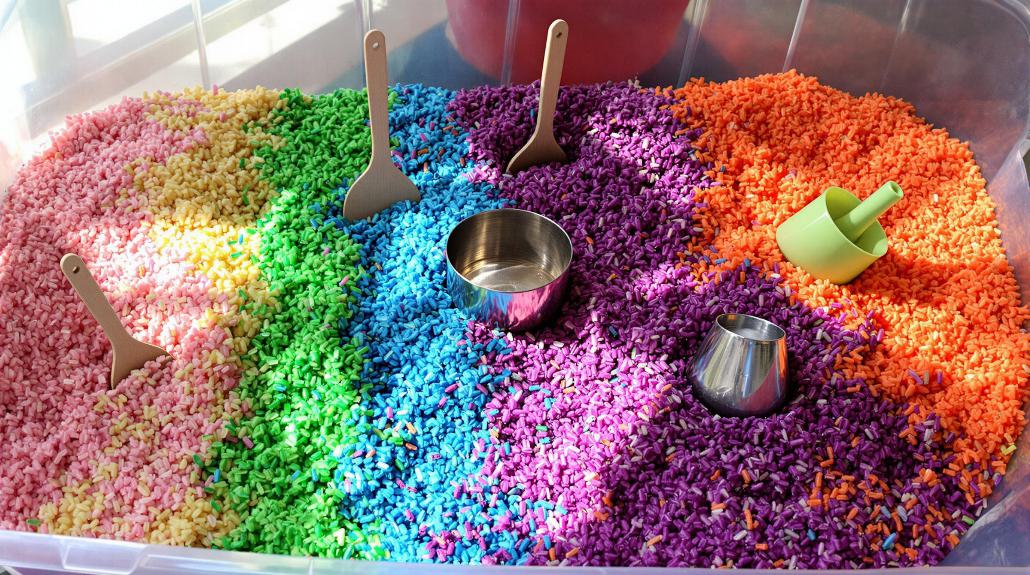
Another popular sensory activity is the rainbow rice bin, which brings vibrant colours to hands-on learning.
You’ll love how easy it is to create this engaging sensory experience using regular rice, food colouring, and vinegar.
Mix one cup of rice with one tablespoon of vinegar and several drops of food colouring, then let it dry completely.
Once you’ve made multiple colours, arrange them in a rainbow pattern in a large container.
To enhance the play experience, add scoops, funnels, and small toys. Your children can practice pouring, sorting, and measuring while developing fine motor skills.
This activity can keep children engaged for up to 45 minutes of independent play.
They’ll also learn about capacity and cause-and-effect relationships. For fun, try hiding alphabet letters or number tiles in the rice for educational treasure hunts.
4. Water Bottle Sound Wall
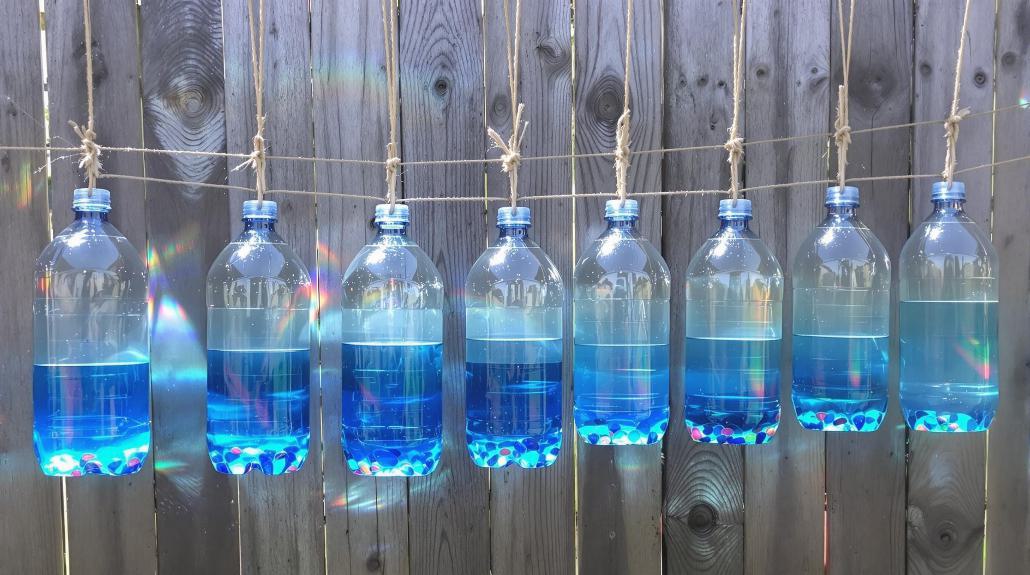
A water bottle sound wall transforms ordinary recyclables into an engaging sensory experience that delights young learners.
You’ll need empty plastic bottles, fillers, beads, rice, small toys, and materials to secure the lids.
Fill each bottle partially with different items to create unique sounds, then secure the tops with glue or strong tape for safety.
Natural items like pebbles and sticks can create fascinating sounds while connecting children to the environment.
Once you’ve assembled your bottles, arrange them in a grid pattern on a wall or fence where children can investigate freely.
You can enhance the visual appeal by adding coloured bottles or sparkly elements.
Let your children shake, tap, and roll the bottles to discover different sounds.
It’s a fantastic way to support their sensory development while teaching them about cause and effect through hands-on investigation.
5. Shadow Puppet Theater
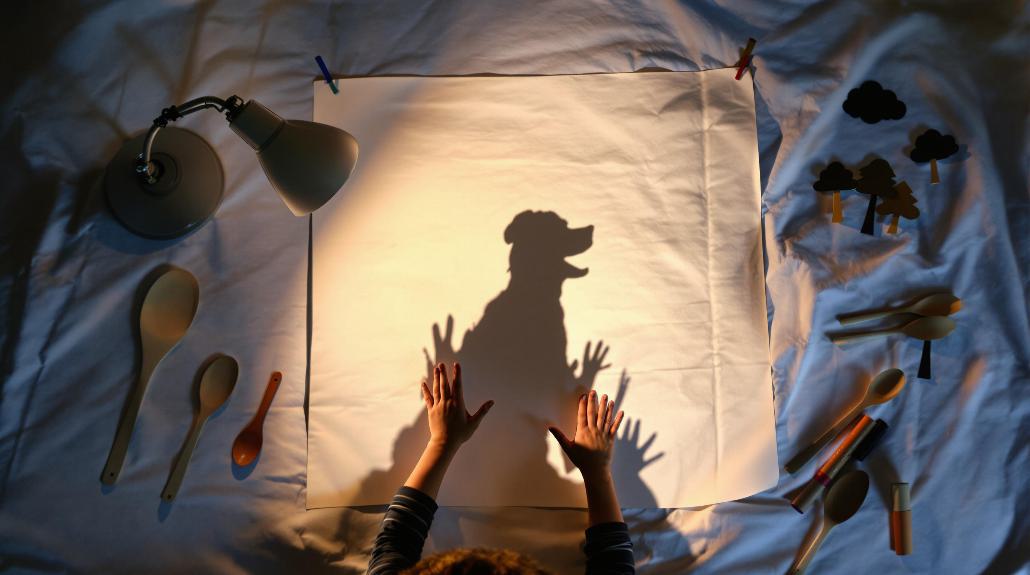
Creating a shadow puppet theatre requires three basic items: a light source, a screen, and your imagination.
You’ll be amazed at how everyday objects can transform into magical characters when their shadows dance across a simple white sheet or paper screen.
You can bring stories to life with just a desk lamp or flashlight. This ancient art form has been mesmerizing audiences since 200 BCE.
- Set up your screen by hanging a white sheet or taping white paper to a doorway.
- Position your light source behind where you’ll stand, aimed at the screen.
- Cut out simple shapes from cardboard or create puppets using your hands.
- Practice moving your puppets between the light and the screen to create clear shadows.
Try different angles and distances to find the perfect setup.
You can add colour using transparent materials like cellophane for a dramatic effect.
6. Coffee Ground Sensory Dig
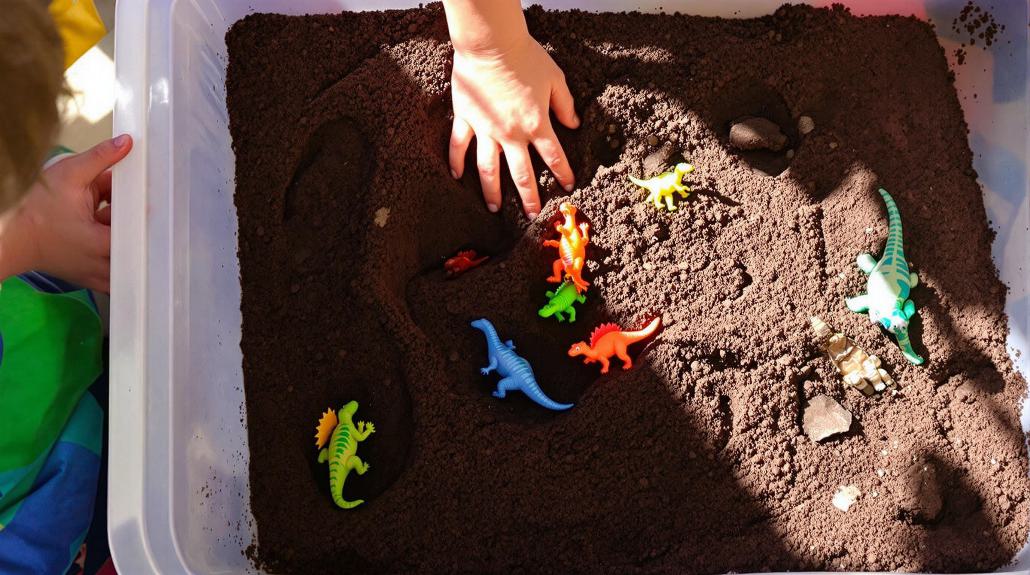
Transform everyday coffee grounds into an exciting archaeological dig site that will captivate children’s imaginations for hours.
Mix flour with used coffee grounds and add water until the mixture is mud-like. Throughout the mixture, hide plastic dinosaurs or objects in a clear plastic tray.
To encourage investigation and discovery, you should provide various tools, such as cups, shovels, and tweezers.
Children can practice fine motor skills while digging, scoping, and searching for buried treasures.
Remember to set up a wash station nearby to clean the objects and hands found. To modify this activity, you can use dried grounds to minimize the mess or combine them with cornmeal.
For older children, incorporate discussions about palaeontology and the fossilization process while they investigate.
7. Paper Plate Tambourines
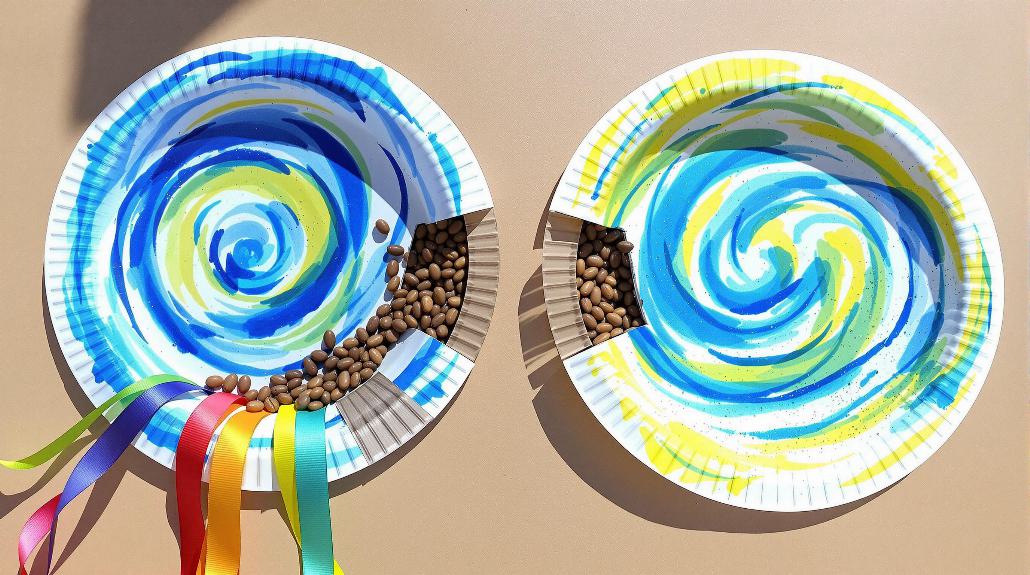
Two paper plates and a handful of household items can be used to craft a delightful musical instrument perfect for young musicians.
Start by decorating your plates with paint, stickers, or markers, choosing festive designs that inspire creativity.
Once your artwork is complete, you’ll transform these simple materials into an engaging sensory tool.
- Paint and decorate both paper plates with your chosen design
- Place dried beans or beads between the plates for sound
- Secure the edges with staples, leaving room for holes
- Punch holes around the rim and thread ribbon through them
You can customize your tambourine by using different filling materials or adding a clear plastic window to watch the movement inside.
Don’t forget to experiment with various rhythms and sounds once it’s complete.
8. DIY Cloud Dough
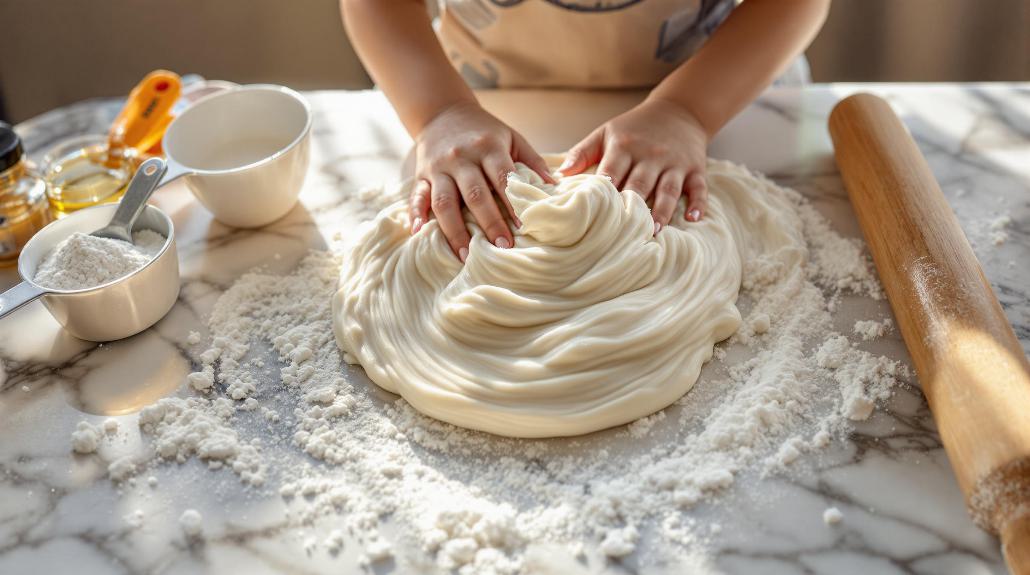
Cloud dough offers an affordable and engaging sensory experience using just two simple ingredients from your pantry.
To create this moldable, silky-smooth dough that children love to investigate, you’ll need 8 cups of flour and 1 cup of baby oil or vegetable oil.
To prepare, mix the flour and oil until you’ve achieved a consistency that holds its shape when squeezed.
If you’d like coloured dough, add oil-based candy food colouring to your oil before combining it with the flour.
Store your cloud dough in an airtight container, and set up play sessions with moulds, scoops, and toys for enhanced sensory investigation.
Remember to supervise children during play and consider using a plastic tablecloth to contain any mess.
You can easily sweep up spills when playtime’s done.
9. Cotton Ball Snow Play
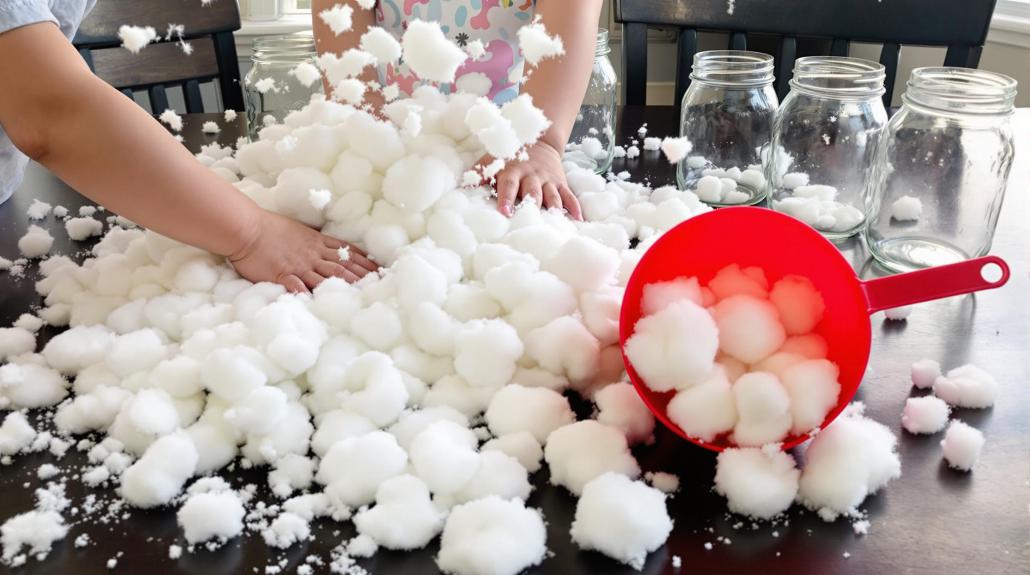
Cotton Ball Snow Play delivers a delightful sensory experience that won’t cost you a penny.
Using everyday items from your home, you can create a winter wonderland that engages your child’s senses and develops essential skills.
Start by drawing a large snowman on paper and securing it to the wall with contact paper sticky-side out.
- Let your child throw cotton balls at the sticky snowman to develop gross motor skills.
- Create sensory bins by hiding themed objects among the cotton balls.
- Practice counting skills by placing cotton balls one at a time.
- Encourage creativity by letting your child design their snowy scene.
This activity can easily be modified for themes throughout the year, from Antarctic adventures with penguins to spring scenes with melting snowmen.
10. Pasta Shape Art
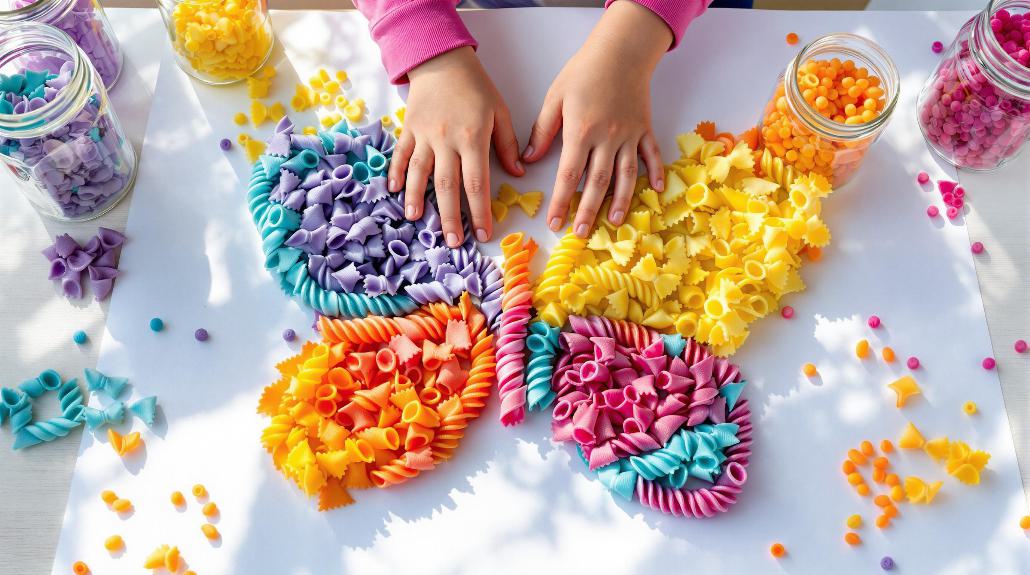
Pasta Shape Art transforms ordinary kitchen staples into an engaging sensory adventure that builds fine motor skills and creative expression.
You’ll find endless possibilities for creating unique masterpieces using different pasta shapes, such as elbow macaroni, bowties, and penne.
Start by dyeing your pasta using food colouring or liquid watercolours in a sealed plastic bag. Once you’ve achieved your desired colours, spread the pasta on a flat surface to dry.
You can speed up this process by placing it in direct sunlight.
When your pasta’s ready, you can use it for sorting activities, creating colourful necklaces, or designing vibrant collages.
Store any unused coloured pasta in airtight containers for future projects.
Remember to choose appropriate shapes for your child’s age group and always supervise young artists during crafting sessions.
11. Cardboard Box Touch Wall
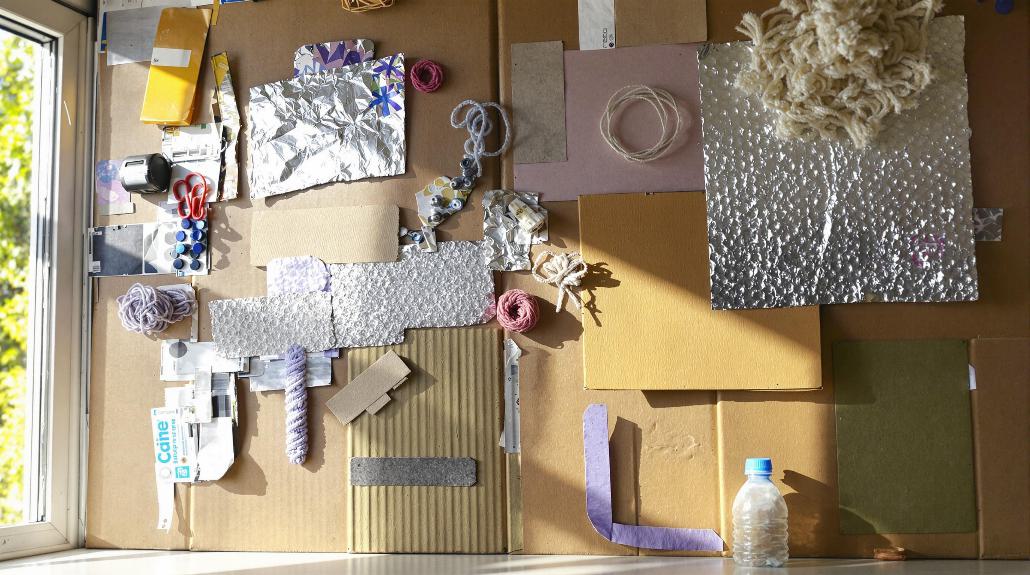
A cardboard box touch wall offers endless sensory investigation opportunities while recycling everyday materials.
You’ll create an engaging tactile experience by cutting windows in a large box and attaching different textured items.
This simple project encourages children to investigate their sense of touch while developing descriptive language skills.
- Start by cutting various-sized openings in your cardboard box, ensuring the edges are smooth and safe.
- Attach items with distinct textures like bubble wrap, fabric scraps, and foil around the openings.
- Add natural materials such as leaves, sticks, and smooth stones to create diverse sensory experiences.
- Create mystery zones where children can touch and guess hidden objects inside.
Remember to supervise young investigators and regularly check the touch wall’s stability to guarantee safe play.
12. Bubble Wrap Dance Floor
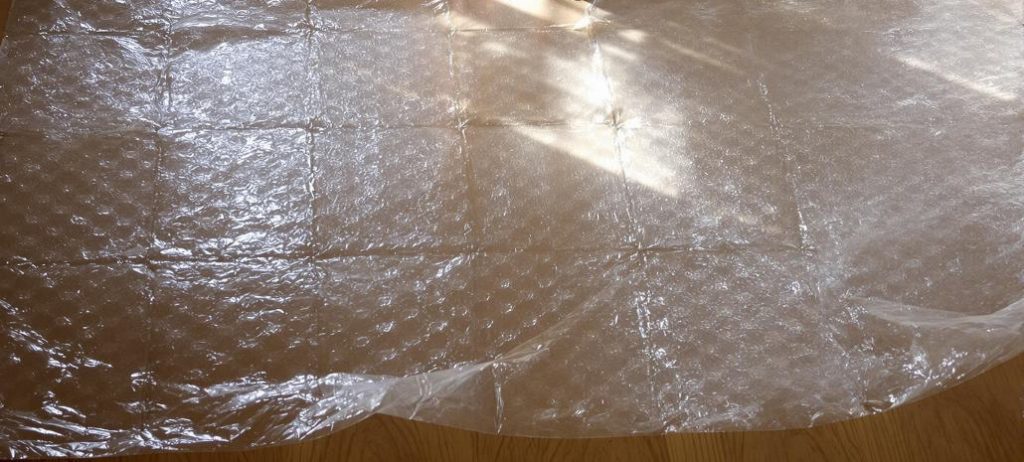
Transform your living space into a sensory wonderland with a bubble wrap dance floor that delights children through sound, touch, and movement.
Secure large sheets of bubble wrap to your floor using masking tape, ensuring all edges are firmly attached to prevent tripping hazards.
You’ll want to check regularly for loose sections or damage.
To enhance the experience, add non-toxic paint to the bubble wrap or place coloured paper underneath for visual interest.
Let your children investigate different ways to interact with the surface – they can walk, crawl, or roll across it.
Create “roads” for toy cars or incorporate other sensory materials for fun.
Remember to supervise children during this activity and keep small pieces out of reach.
13. Shredded Paper Bin
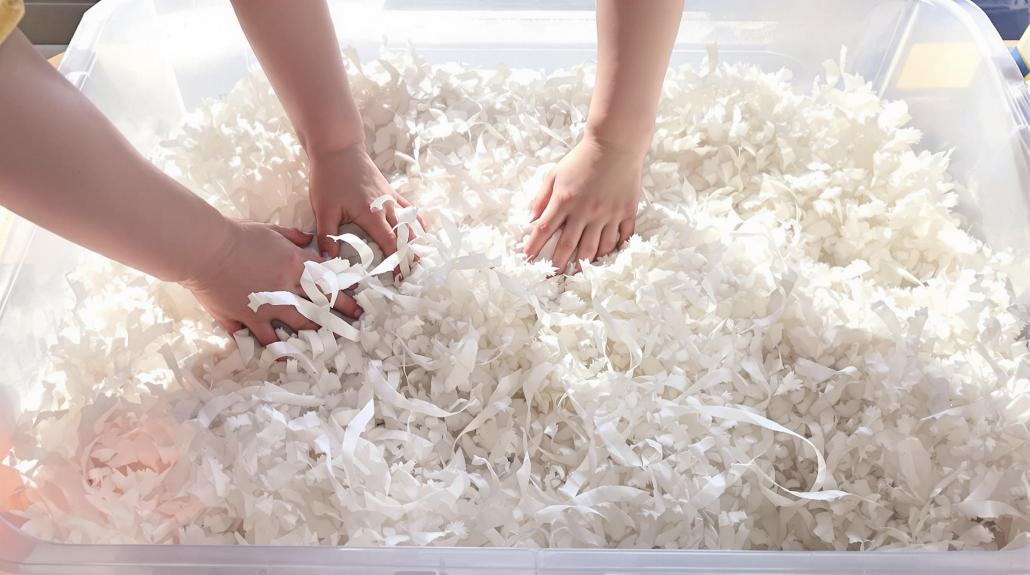
When you’re ready to move from active play to calming exploration, create a shredded paper sensory bin that will captivate children for hours.
This engaging activity helps develop fine motor skills while providing a soothing sensory experience.
You’ll need a large plastic container and shredded paper from your home office supplies.
- Fill your container with shredded paper and add tools like tongs, small toys, or pipe cleaners.
- Place a sheet underneath to make cleanup easier and set clear boundaries for play.
- Consider hiding objects within the paper for an exciting treasure hunt experience.
- Enhance the activity by adding coloured paper or combining it with other materials like magnets.
You can extend the play by creating themed scenarios or incorporating water for different textures, making this versatile activity both educational and entertaining.
14. Sock Puppet Storytelling
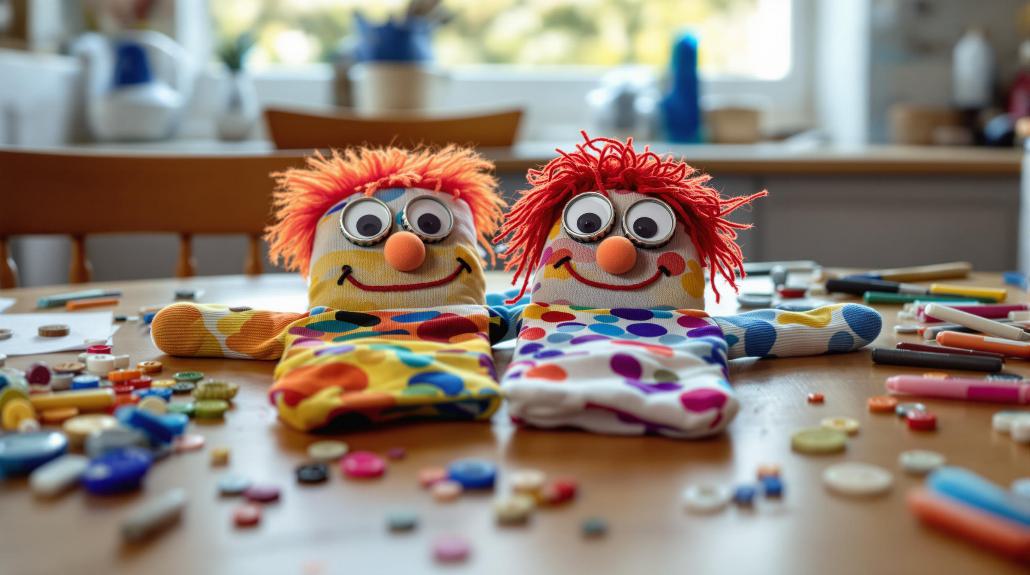
Sock puppet storytelling releases creativity while costing virtually nothing. You’ll need a plain sock and basic craft supplies to create a fascinating puppet character.
Start by folding back the toe to form a mouth, securing it with an invisible stitch if needed, then add simple features like button eyes or yarn hair.
Once your puppet’s ready, please bring it to life through movement and voice.
Move the mouth in sync with your words and maintain eye contact between the puppet and its audience.
You can use your sock puppet to tell stories, teach lessons, or engage children in interactive play.
This activity helps develop communication skills, boosts confidence, and encourages imaginative thinking while providing a hands-on sensory experience that children love.
15. Dried Bean Exploration
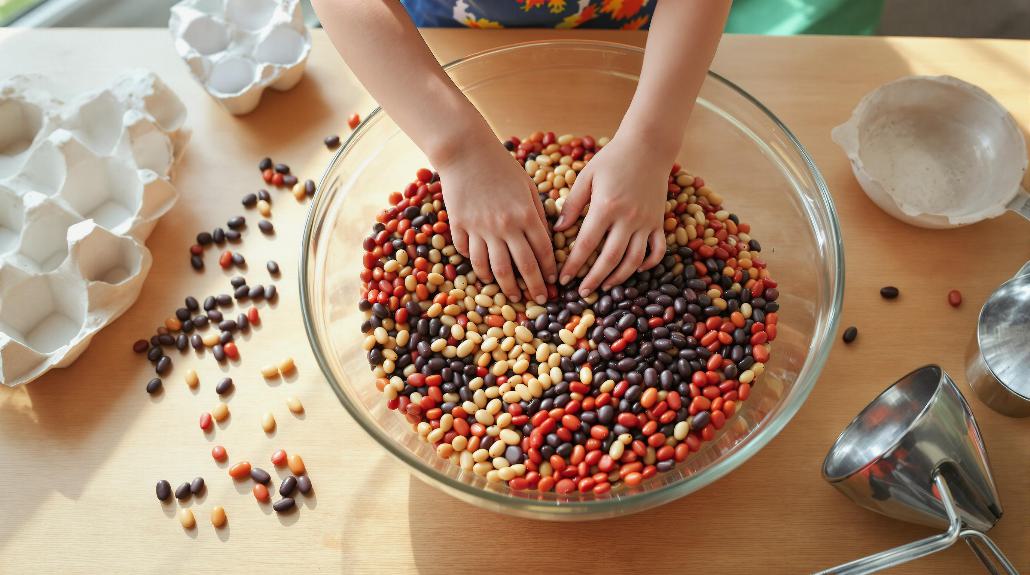
Dried beans offer a wealth of sensory exploration possibilities while being incredibly cost-effective.
These common pantry items can become engaging educational tools combined with household containers and utensils.
Proper supervision allows you to create rich learning experiences that develop fine motor skills and cognitive abilities.
- Pour white beans into a zip-top bag with food colouring and hand sanitiser to create vibrant sensory materials.
- Set up a sorting station using ice cube trays and different coloured beans.
- Create sound experiences by dropping beans into various containers.
- Practice scooping and pouring with measuring cups and funnels.
Remember to supervise young children during bean activities, as they can pose choking hazards.
You’ll want to incorporate cleanup into the learning process, teaching responsibility while maintaining a safe play environment.
16. Water Play Station
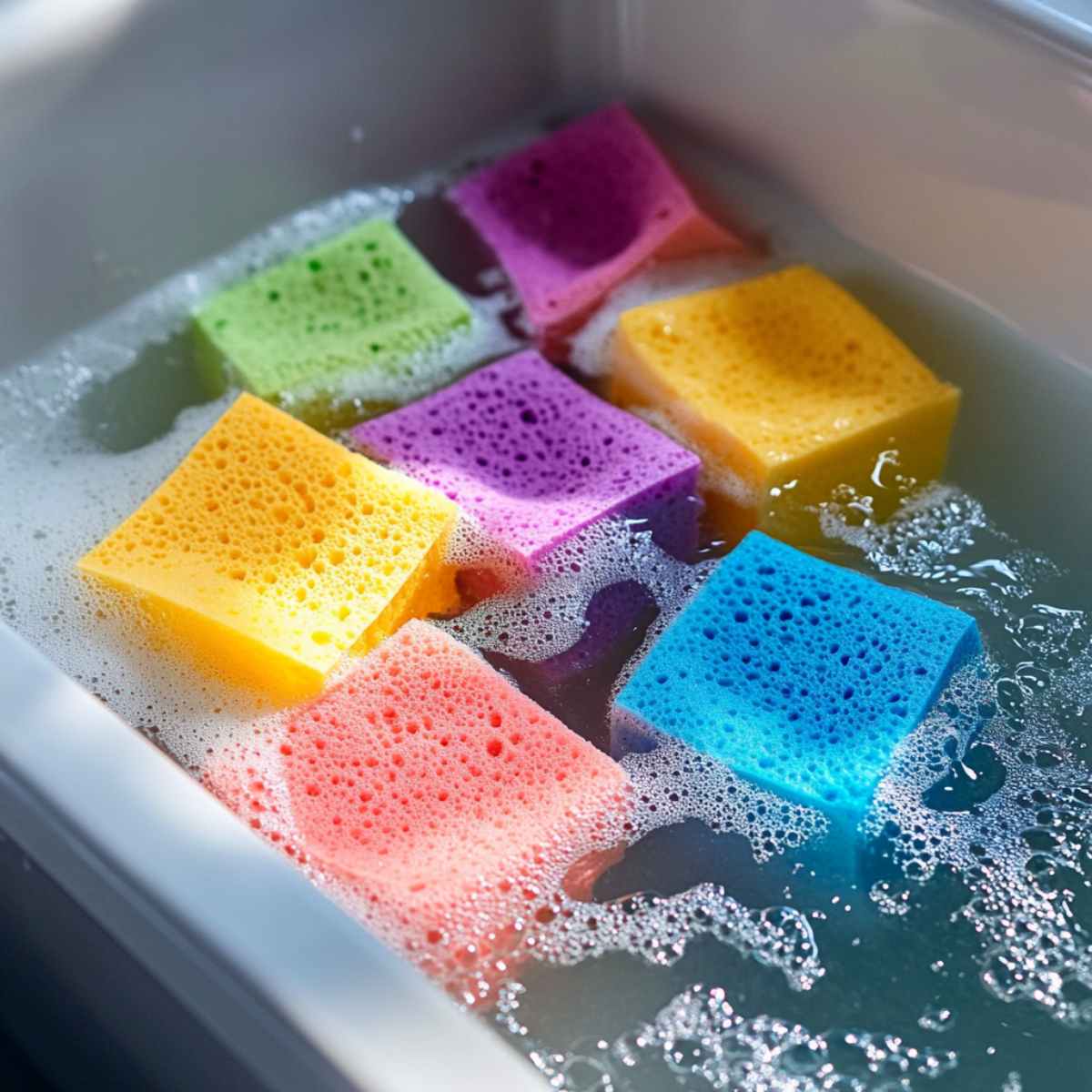
Turn an ordinary tub of water into a fun, educational, and free sensory adventure.
You need only a shallow container, such as a baking tray, plastic tub, or large bowl, filled with water and a few common household items.
Provide small containers, spoons, ladles, and measuring cups so your child can scoop, pour, and transfer water.
Add sponges or washcloths for squeezing, strengthening hand muscles and enhancing grip. Lightweight items like corks or plastic lids can float, allowing children to explore sinking and floating.
To keep the activity manageable, set up the water play station on a towel or plastic sheet to catch spills and ensure the area is easy to clean.
Supervise your toddler as they splash and experiment with actions like stirring or pouring, which helps develop fine motor skills and teaches cause-and-effect concepts.
Enhance the experience by adding ice cubes for sensory exploration of temperature or a small squirt of dish soap to create bubbles.
Encourage curiosity by asking questions like, “Why does this sink?” or “What happens when you squeeze the sponge?”
This hands-on play engages their senses, builds coordination, and sparks early science discovery—all while keeping them entertained.
17. Glass Bottle Music
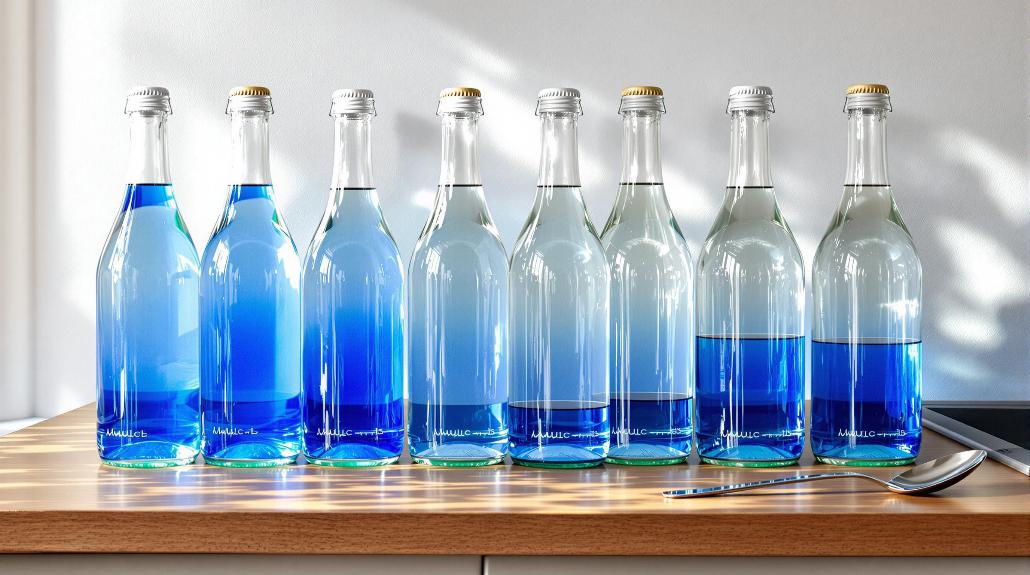
Have you ever wondered how ordinary glass bottles can transform into musical instruments?
You’ll be amazed to discover that you can create musical notes simply by adding varying amounts of water to bottles.
When you tap the bottles with a spoon or blow across their tops, you’re creating vibrations that produce unique sounds.
Here’s how to create your glass bottle orchestra:
- Gather several identical glass bottles and fill them with different amounts of water.
- Line up your bottles from least to most water-filled.
- Tap each bottle gently with a spoon to hear the pitch differences.
- Try blowing across the tops to create alternative sounds.
Remember that more water creates a lower pitch, while less water results in higher notes.
You’re not just making music – you’re experiencing science in action through sound waves and vibrations.
18. Tissue Paper Color Discovery
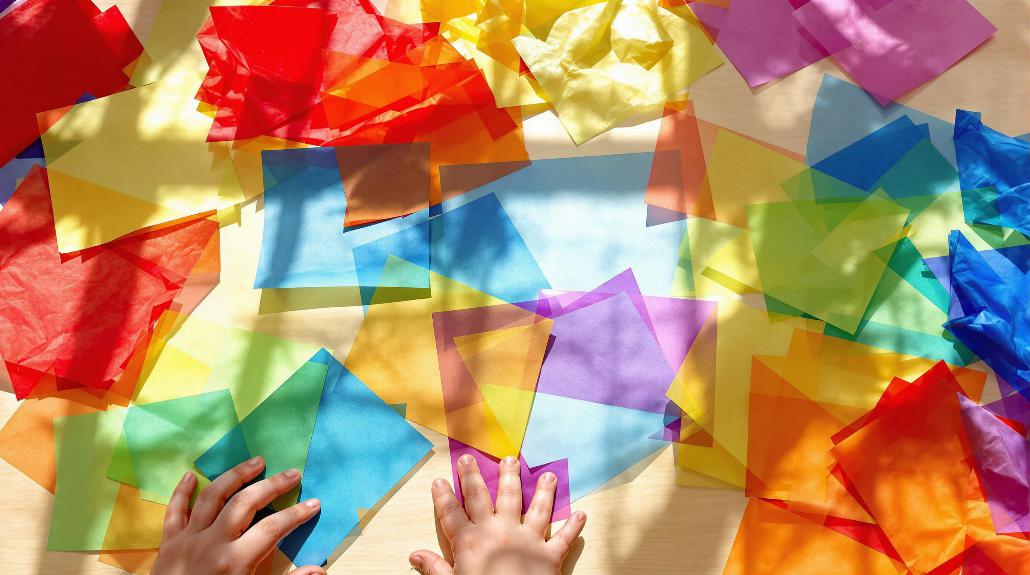
Transform your space into a vibrant sensory wonderland using colourful tissue paper as your main ingredient.
You’ll need a container, various colours of tissue paper, and small objects to hide.
Start by layering different coloured tissue papers, creating an exciting investigation bin to spark curiosity and engagement.
To enhance the experience, you can add tongs to pick up paper pieces, encouraging the development of fine motor skills.
Using contact paper on a window, you can combine tissue paper with other materials to create texture variation or a vertical display.
Don’t forget to include crumpled paper balls for additional sensory play.
As children investigate, they’ll naturally develop colour recognition, sorting abilities, and problem-solving skills while having fun discovering hidden treasures beneath the layers.
19. Tea Party Sensations
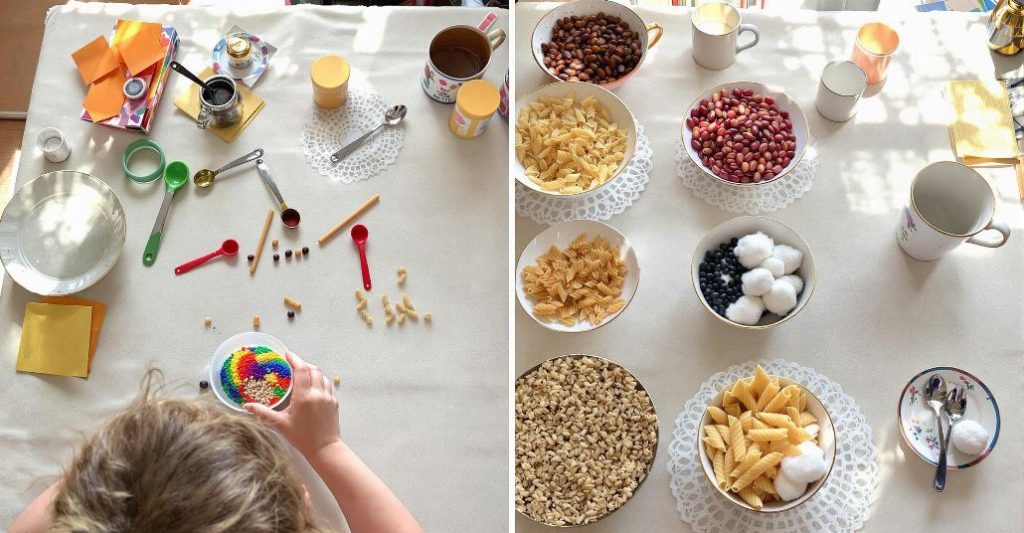
While tissue paper play engages the visual senses, a sensory tea party brings touch, smell, and imaginative play to life.
By setting up a waterproof area with tubs or trays and adding child-safe tea sets, you’ll transform everyday items into an enchanting sensory experience.
- Fill teapots with warm water and introduce herbal teas to create varying colours and scents.
- Let children investigate the contents of tea bags, practice pouring between cups, and mix natural elements like leaves or stones.
- Add unpopped corn kernels, dried leaves, or flower petals to enhance tactile experiences.
- Encourage teamwork by inviting multiple children to share in serving and creating imaginative brews.
This activity develops fine motor skills, sensory awareness, and social interaction while nurturing creative play and investigation.
20. Paper Tube Sound Garden
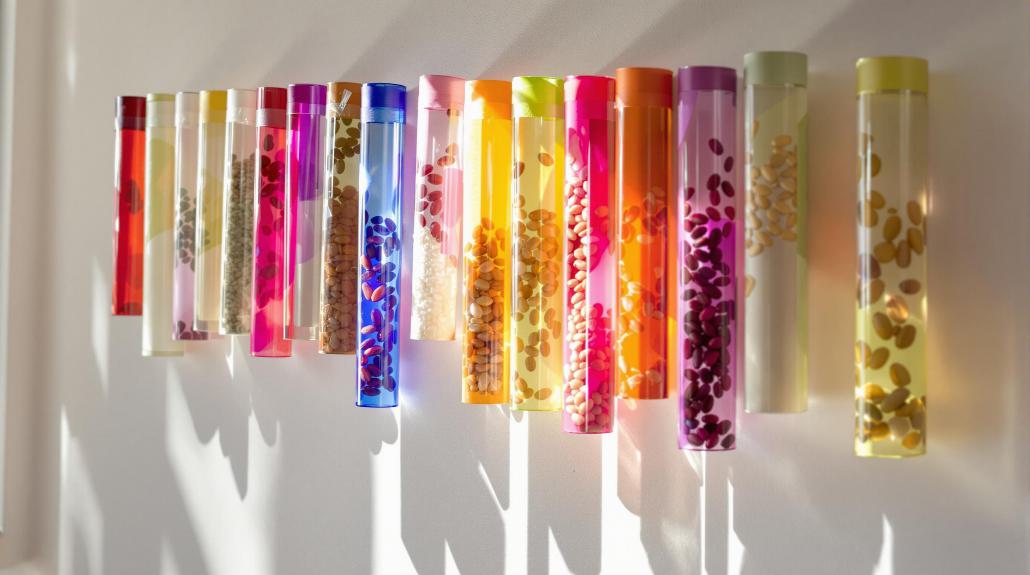
Sound comes alive when ordinary paper tubes are turned into musical instruments.
You’ll discover three engaging ways to create music: paper tube xylophones that produce different notes based on tube length, traditional Chilean-inspired rain sticks that mimic nature’s peaceful sounds, and simple shakers that bring rhythm to life.
To make your sound garden, you’ll need basic materials like paper tubes, rice, beans, rubber bands, and decorative items.
Cut tubes to different lengths for the xylophone and secure them with rubber bands.
Create rain sticks by poking nails in a spiral pattern and filling tubes with rice.
For shakers, seal the ends of tubes with foil and add beans.
You can experiment with various fillers to create unique sounds while developing fine motor skills and musical awareness.
